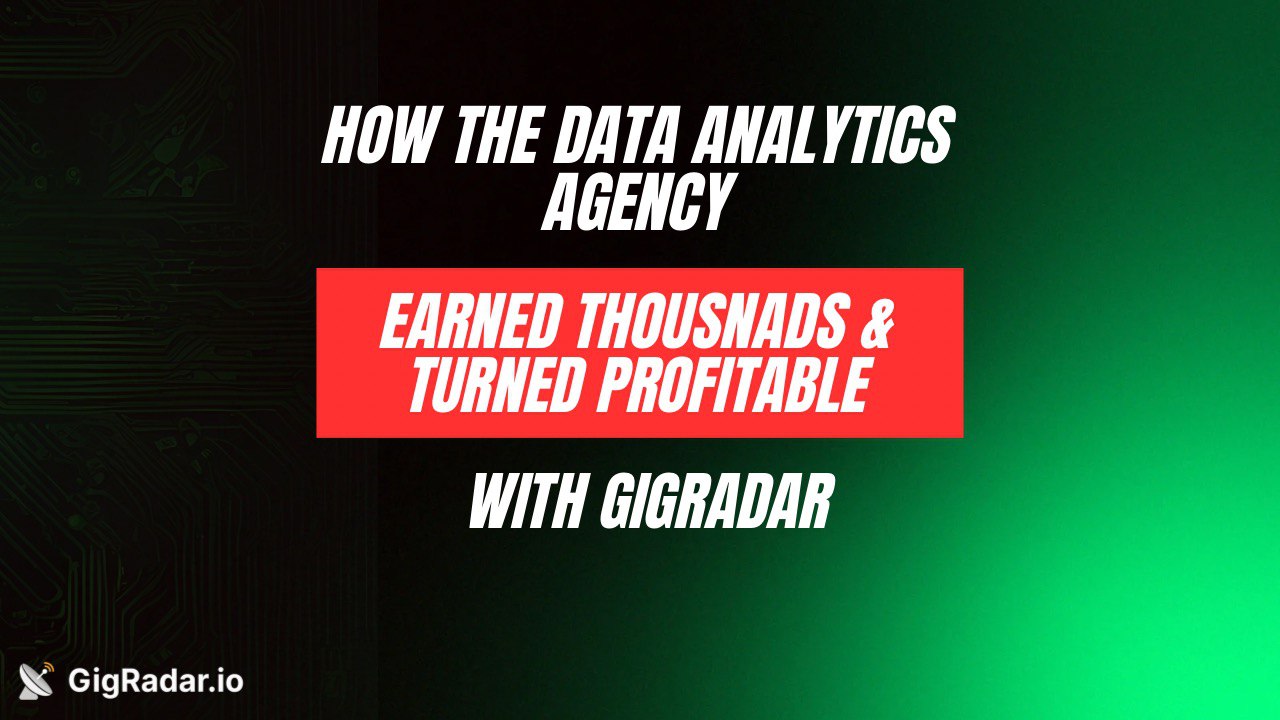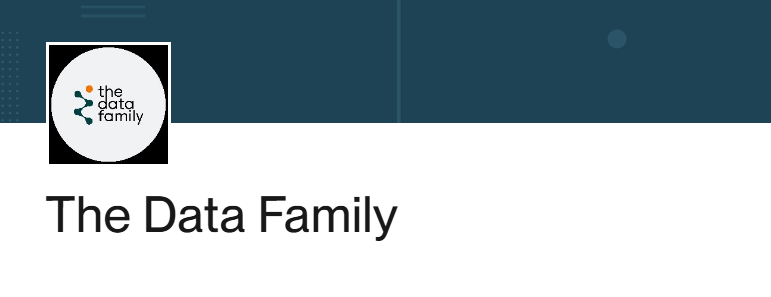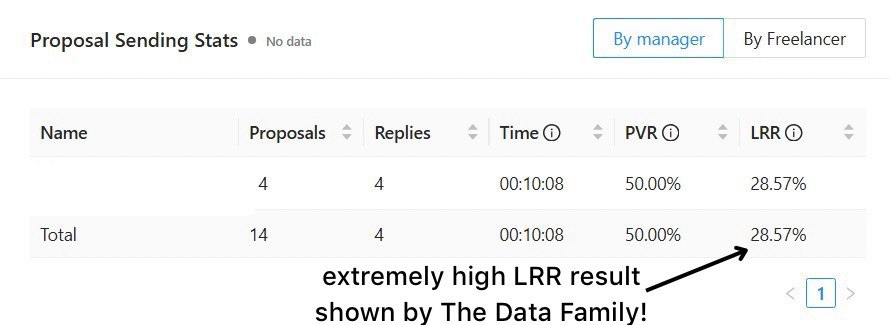
Background
When Nimit founded The Data Family, his focus was clear. He aimed to help small and medium-sized businesses unlock the power of their data. His agency specialized in building data pipelines, implementing data warehousing, and creating interactive dashboards in Power BI and Tableau so clients could make smarter, data-driven decisions. As he put it:
We essentially work with businesses to help them leverage their data to become more data driven. We come in as consultants and do whatever is necessary to make that happen.

Despite having an Upwork account for some time, Nimit rarely used it. Most of his work came from another freelance platform where his agency was already more prominent. Upwork remained on the sidelines, not because he didn’t see its potential, but because of a practical barrier, that was time.
I never really bid much because I didn’t have the time to sit around all day submitting proposals. I wanted another channel for clients, but I couldn’t commit to that much manual work.
The Challenges Before GigRadar
When Nimit decided to revisit Upwork, it wasn’t a strategic plan so much as an experiment. He had started using the platform actively only three or four months before coming across GigRadar. But even during that short time, the challenge was clear. It was winning on Upwork, you had to be fast, consistent, and visible. And that meant sending multiple proposals daily.
For a busy agency owner, that was almost impossible. Upwork’s competitive nature didn’t help. In his category, many projects attracted 100 or more proposals. Without being among the first to apply, your chances of getting noticed dropped sharply.

The reality was that his dormant Upwork profile was not producing results. There was no steady stream of proposals, no consistent pipeline of leads, and without dedicated time to bid manually, growth on the platform seemed out of reach.
Why GigRadar Caught His Attention
The turning point came when Nimit learned about GigRadar’s Auto-Bidder. The idea of automating proposal submissions was exactly what he needed to make Upwork a viable channel.
I found it frustrating to have to sit around and send 5, 10, 20 proposals a day. I just don’t have the time for that. When I realized there was a tool that could do this for me automatically, I thought, why not give it a try and see if we can get clients through there?
Still, he didn’t jump in without questions. He had three main concerns: proposal quality, client perception of AI-generated content, and account safety.
Clients want to see human-generated proposals, and a smart client might spot an AI-written one. Plus, I didn’t want any problems with my Upwork account.
After learning how the tool worked, his fears about account safety disappeared. The other two concerns became a matter of trade-offs. Automation would save time but might not replicate the exact nuance of a hand-written proposal. Still, the benefits outweighed the risks.
Getting Started with GigRadar
Nimit began using GigRadar almost simultaneously with his renewed activity on Upwork. This timing allowed him to see the immediate difference between manual and automated outreach.
The standout feature for him was the Auto-Bidder. While other tools offered job scanning and notifications, GigRadar went further by handling the bidding itself. This freed him from the repetitive work of sending proposals and let him focus on core business activities.
He quickly saw that the automation worked, proposals were going out, applications were timely, and his profile was reaching clients he wouldn’t have connected with otherwise.
The Results After Four Months
In the first four months, GigRadar submitted around 100 proposals on his behalf. That resulted in four to six responses, translating into a 10% reply rate. Out of those, two became paying clients with a 2% conversion rate. One was a smaller contract, but the other had stronger potential and profitability.

The work was mostly on hourly contracts, which made it harder to project exact revenue, but he estimated a few thousand dollars so far. Importantly, his initial investment in GigRadar was recovered within two to three months.
It’s a numbers game. You can prompt the AI to make proposals sound more human, but some clients will still recognize it. For me, it’s worth it because I get opportunities I wouldn’t have had otherwise, and I’m fine with the trade-off.
He was also realistic about the next steps. The automation could get his foot in the door, but winning the project still depended on his ability to close the deal.
Even if you get a response quickly thanks to GigRadar, closing that client is still a whole different ball game. These clients are often talking to dozens of freelancers, so you have to know how to sell.
Lessons Learned and Ongoing Use
Nimit plans to continue using GigRadar, but with the understanding that it’s part of a broader strategy. Success, in his view, depends on a combination of factors:
- A well-written, professional Upwork profile that clearly explains skills and past results
- A strong portfolio showcasing relevant projects
- Well-configured GigRadar scanners to target the right jobs
- The personal sales skills to convert responses into contracts

His actual reply rate (10%) was slightly lower than the 15–20% sometimes quoted by GigRadar’s sales team, but it was still enough to deliver clients and a positive ROI.
Final Thoughts from Nimit
If you have the budget, give it a try. Don’t expect miracles. It can work well, but it’s also a matter of luck and how well you can close clients after they respond. For me, it has worked well enough to continue using it for the next few months. As long as you match your investment, it’s worth trying.
For The Data Family, GigRadar transformed Upwork from a neglected account into an active lead source. The process wasn’t magic, but it created opportunities that manual bidding alone could not have delivered.


